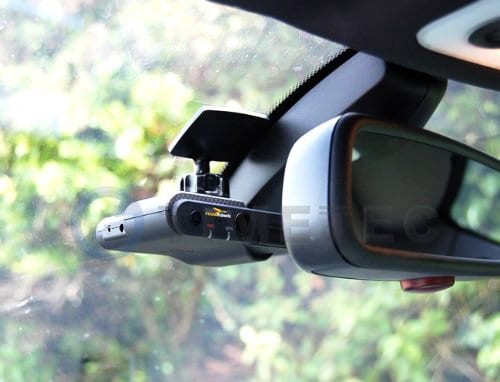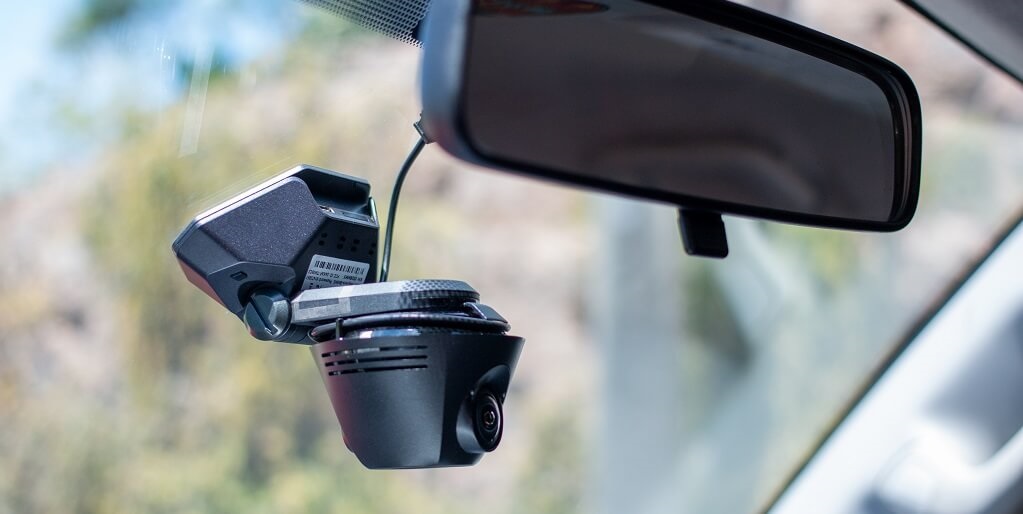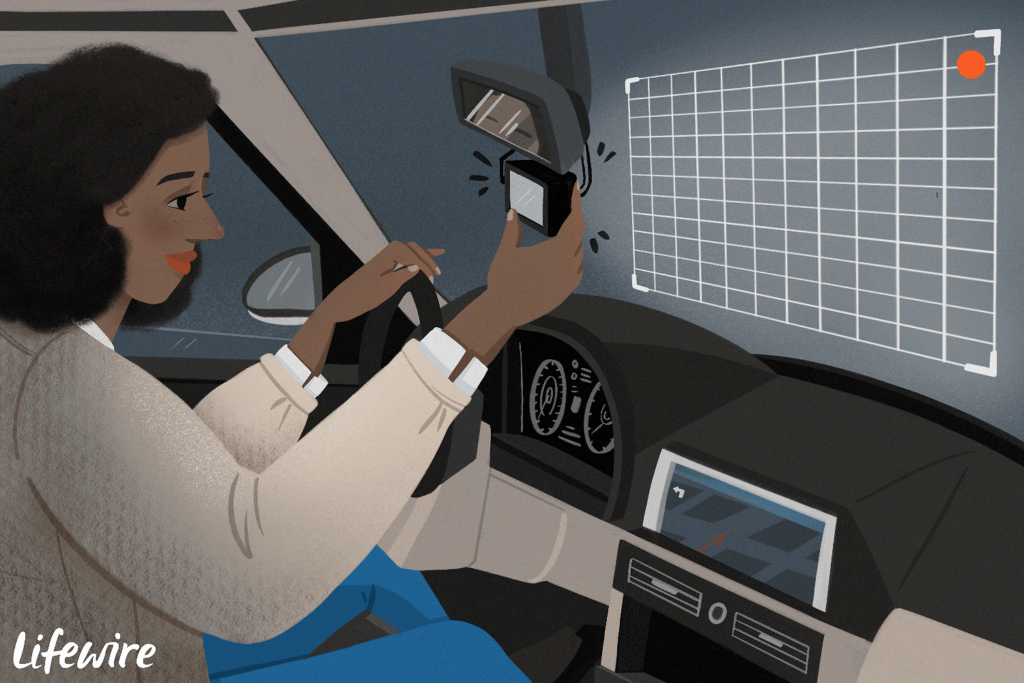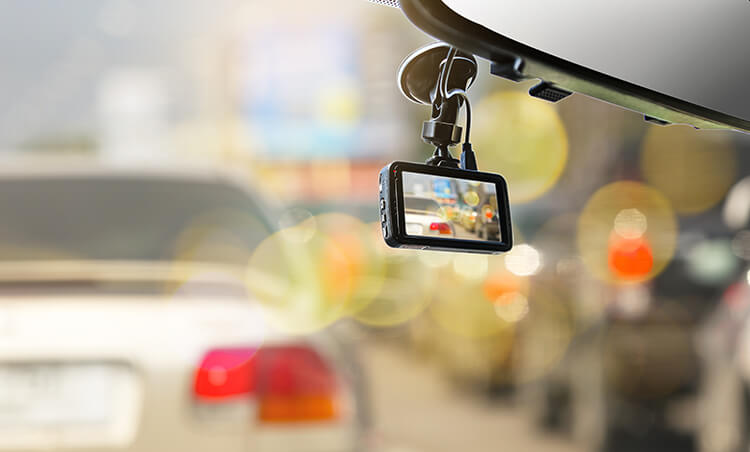In today’s fast-paced world, ensuring the safety of oneself and loved ones is of utmost importance. That’s why every car should have a dash cam, and this safety guide will explain why. With a dash cam in your vehicle, you can capture crucial moments on the road, providing valuable evidence in case of accidents or disputes. Not only does it promote personal security, but a dash cam can also deter potential criminals and provide peace of mind while driving. By investing in this simple yet effective tool, you can navigate the roads with confidence and ensure that you’ll always have an extra set of eyes on the unexpected.
1. Introduction to Dash Cams
What is a dash cam?
A dash cam, short for dashboard camera, is a small video camera that is typically mounted on the dashboard or windshield of a vehicle. It is designed to continuously record the view through a vehicle’s front windshield, capturing both video and audio footage of the road ahead.
How does a dash cam work?
Dash cams are equipped with a wide-angle lens that allows them to capture a broad field of view. They use a loop recording system, which means that once the storage capacity of the memory card is reached, the oldest recordings are automatically overwritten by new ones. This ensures that the dash cam can keep recording without the need for manual intervention.
Types of dash cams
There are various types of dash cams available in the market to suit different needs and preferences. Some common types include:
- Single-lens dash cams: These dash cams have a single lens and capture footage only from the front of the vehicle.
- Dual-lens dash cams: These dash cams have two lenses and capture footage from both the front and rear of the vehicle.
- Mirror dash cams: These dash cams are designed to replace the rearview mirror and provide a seamless, integrated look.
- GPS-enabled dash cams: These dash cams have built-in GPS receivers that record speed and location information along with the video footage.
- Wi-Fi-enabled dash cams: These dash cams allow users to connect to them wirelessly and easily access and transfer the recorded footage.
2. Benefits of Having a Dash Cam
1. Evidence in case of accidents
One of the primary benefits of having a dash cam is that it provides valuable evidence in case of accidents. The recorded footage can serve as proof of what really happened during an incident and help determine who was at fault. This footage can be crucial in situations where the accounts of the parties involved differ, or when eyewitness testimony is not available.
2. Encourages responsible driving
Knowing that they are being recorded often encourages drivers to be more cautious and responsible on the road. With a dash cam, you are more likely to adhere to traffic rules, avoid aggressive driving behaviors, and maintain a safe driving speed. This can contribute to a reduction in accidents and help create a safer driving environment for everyone.
3. Protection against fraudulent claims
Dash cams are a great defense against fraudulent insurance claims. Unfortunately, there are individuals who stage accidents for the purpose of filing false claims and extorting money from unsuspecting drivers. With a dash cam, you can easily prove that an accident was not your fault and potentially save yourself from costly legal battles and increased insurance premiums.
4. Preventing theft and vandalism
In addition to capturing footage of accidents, dash cams can also help deter theft and vandalism. The presence of a visible dash cam can act as a deterrent to potential thieves or vandals, as they are less likely to target a vehicle that has a camera recording their actions. If an incident does occur, the recorded footage can be valuable in identifying the culprits and assisting law enforcement in their investigations.
5. Providing peace of mind
Having a dash cam installed in your vehicle provides an added sense of security and peace of mind. You can have confidence that in the event of an incident, you have a reliable record of what transpired. Whether it’s a minor fender-bender or a more serious collision, the presence of a dash cam can help you navigate through the aftermath with clarity and confidence.
3. Choosing the Right Dash Cam
1. Essential features to consider
When selecting a dash cam, there are several essential features to consider. These include video resolution, field of view, night vision capabilities, GPS functionality, and storage capacity. Opting for a dash cam with higher video resolution and a wide field of view will ensure that you capture clear, detailed footage of any incidents on the road.
2. Budget considerations
Dash cams come in a range of prices, so it’s important to set a budget before making a purchase. While it can be tempting to opt for a cheaper option, it’s worth investing in a dash cam from a reputable brand that offers reliable performance and quality footage. Be sure to consider the overall value and long-term benefits when evaluating different models and their costs.
3. Installation options
Most dash cams are designed to be easily installed by the user. Some models attach to the windshield with a suction cup, while others use adhesive mounts. Consider your personal preference and determine which type of installation is best suited for your vehicle. It’s also important to ensure that the dash cam does not obstruct your field of vision while driving.
4. Integration with other devices
Consider whether you want your dash cam to integrate with other devices, such as smartphones or GPS systems. Some dash cams offer Wi-Fi connectivity, allowing you to transfer footage wirelessly to your phone for easy viewing and sharing. Others may have built-in GPS receivers to track your location and speed. Assess your needs and choose a dash cam that offers the desired level of integration.
4. Dash Cam Legality and Privacy Concerns
1. Legal regulations on dash cams
Before installing a dash cam, it’s important to understand the legal regulations governing their use in your jurisdiction. While dash cams are generally legal, there may be specific laws that dictate where and how they can be used. For example, some countries or states may have restrictions on recording audio or privacy concerns related to capturing footage of other individuals. Familiarize yourself with your local laws and ensure compliance to avoid potential legal issues.
2. Privacy concerns and data protection
Using a dash cam means recording footage of your surroundings, which may include other vehicles, pedestrians, or private property. It’s important to respect the privacy of others and only use the recorded footage for legitimate purposes, such as insurance claims or providing evidence to law enforcement. Store the footage securely and delete it once it is no longer needed to protect the privacy of individuals captured in the recordings.
3. Recording audio and video policies
Some dash cams are equipped with microphones that record audio along with the video footage. However, recording audio without the consent of individuals may have legal implications in certain jurisdictions. It’s important to understand the laws regarding audio recording in your area and decide whether you want to enable or disable the audio recording feature on your dash cam accordingly.
5. Installing and Setting Up Your Dash Cam
1. Mounting the dash cam properly
Properly mounting your dash cam is crucial to ensure optimal performance and minimize obstruction to your view. Most dash cams come with adjustable mounts that can be attached to the windshield or dashboard. Follow the manufacturer’s instructions for mounting the dash cam securely and ensure that it is positioned in a way that captures a clear view of the road ahead.
2. Connecting to power source
Dash cams typically require a continuous power source to function. The most common way to power a dash cam is by connecting it to the vehicle’s cigarette lighter socket or through a hardwired installation. Determine the power source option that works best for you and follow the instructions provided by the manufacturer to establish a reliable power connection.
3. Adjusting camera settings
Once the dash cam is properly installed and powered on, you may need to adjust the camera settings to meet your preferences and requirements. These settings may include video resolution, frame rate, exposure, loop recording duration, and motion detection sensitivity. Refer to the user manual or on-screen menu of your dash cam to access and modify the settings as needed.
4. Securing cables for safety
To maintain a neat and safe interior space, it’s important to secure the dash cam’s cables and ensure they are not obstructing your view or creating any safety hazards. Utilize cable clips or adhesive mounts to secure the cables along the edges of the windshield or interior panels. Avoid placing cables in a way that could interfere with airbags, obstruct your visibility, or become tangled with other controls or accessories in the vehicle.
6. Understanding Dash Cam Footage
1. Basic navigation of dash cam recordings
Navigating through dash cam footage is usually straightforward. Most dash cams have a built-in display or can be connected to a smartphone or computer for easy viewing. Use the playback controls provided to browse through the recorded footage, pause, rewind, or fast-forward as needed. Familiarize yourself with the dash cam’s user interface and menu options to make the most of its playback capabilities.
2. Retrieving and saving important footage
In the event of an accident or incident on the road, it may be crucial to retrieve and save specific footage from your dash cam. To ensure important footage is not overwritten, you can manually mark or lock the files for later retrieval. Some dash cams also have built-in sensors that automatically detect collisions and save the corresponding footage in a separate folder. Familiarize yourself with these features to easily locate and save important recordings when needed.
3. Using timestamps and GPS data
Dash cams often automatically embed timestamps and GPS data into the recorded footage. Timestamps provide the exact date and time of each recording, while GPS data includes information such as location, speed, and direction of travel. These features can be valuable when analyzing an incident or presenting evidence to insurance companies or law enforcement. Make sure to enable these functions on your dash cam and ensure their accuracy.
4. Transferring and sharing footage
To transfer or share dash cam footage, you can typically connect the dash cam to a computer or smartphone using a USB cable or wireless connection. Depending on your dash cam model, you may also be able to remove the memory card and insert it into a card reader for direct access. Once the footage is transferred to your device, you can review, edit, and share it as needed. Be mindful of privacy and only share the footage with authorized parties for legitimate purposes.
7. Dash Cams and Insurance Claims
1. How dash cam footage helps with insurance claims
Dash cam footage can be instrumental in insurance claims. It provides clear visual evidence of what occurred during an accident or incident, helping insurers make accurate assessments of liability. This footage can eliminate any ambiguity or conflicting accounts of events and expedite the claims process. In some cases, insurance companies may offer discounts or incentives for drivers who have a dash cam installed in their vehicles.
2. Informing your insurance company
If you have a dash cam installed in your vehicle, it is important to inform your insurance company. Letting them know about the presence of a dash cam could potentially improve their assessment of your driving behavior and reduce your insurance premiums. Additionally, your insurance provider may have specific policies or requirements regarding the use of dash cams, so it’s best to consult with them directly to ensure compliance.
3. Handling insurance disputes
In the event of a dispute with your insurance company, dash cam footage can be crucial in resolving the matter. If your insurer is disputing your claim or assigning more fault to you than is warranted, presenting the recorded footage can strengthen your case. It is important to cooperate fully with your insurance company, provide them with the relevant dash cam footage, and communicate clearly to help resolve any disputes effectively.
8. Maintenance and Care for Dash Cams
1. Keeping the lens clean
To ensure clear and high-quality footage, it is important to keep the lens of your dash cam clean. Regularly inspect the lens for dust, fingerprints, or smudges and gently clean it with a soft microfiber cloth or lens cleaning solution. Avoid using harsh chemicals or abrasive materials that could scratch or damage the lens.
2. Regularly checking and formatting SD card
The storage capacity of your dash cam’s memory card can impact its performance. Regularly check the available space on the SD card and format it as needed to maintain optimal storage capacity. Formatting the card periodically also helps prevent file corruption and ensures a smooth recording experience.
3. Protecting dash cam from extreme temperatures
Dash cams are designed to withstand a range of temperatures, but extreme heat or cold can be detrimental to their performance. Avoid exposing your dash cam to direct sunlight for extended periods, especially during hot summer months. If you live in a region with extremely cold temperatures, consider using a dash cam with a built-in heater or insulating it to protect it from freezing.
4. Updating firmware and software
Like any electronic device, dash cams may periodically receive firmware updates or software patches from the manufacturer. These updates can improve performance, address any known issues, and introduce new features. Stay informed about any available updates for your dash cam model and follow the manufacturer’s instructions to ensure that your device is running the latest firmware and software versions.
9. Addressing Common Concerns and Myths
1. Limited recording capacity
While it is true that dash cams have a limited recording capacity due to the size of their memory cards, loop recording allows for continuous recording without the need to manually delete old files. As long as you have sufficient storage space, your dash cam will continue to record and overwrite the oldest files.
2. Is it always recording?
Dash cams are typically designed to start recording automatically when the vehicle’s ignition is turned on or when they detect motion. However, they are not designed to constantly record when the vehicle is parked and the engine is off. Some dash cams may have a “parking mode” feature that allows for limited recording in parking lots or when the vehicle is stationary, but this is not the default setting.
3. Can a dash cam drain car battery?
Properly installed and configured dash cams should not drain your car’s battery significantly. Most dash cams are equipped with features to prevent excessive power consumption, such as a voltage cutoff system that automatically turns off the dash cam when the battery voltage drops below a certain level. However, if you frequently leave your vehicle parked for extended periods, it is recommended to use a dedicated power source, such as a hardwired kit or a battery pack, to avoid any potential battery drain.
4. Weather and visibility limitations
Dash cams are designed to perform in various weather conditions, but extreme weather or poor visibility can affect the quality of the recorded footage. Heavy rain, fog, or direct sunlight may impact the clarity and visibility of the footage. It is important to adjust your driving behavior accordingly and be aware that certain conditions may affect the reliability of the footage captured by your dash cam.
5. Can dash cam footage be used against you?
In general, dash cam footage is meant to provide an objective record of events and should not be used against you if you are not at fault. However, it is essential to handle the footage responsibly and in accordance with the law. If you are involved in an incident and have dash cam footage that may contradict your own version of events, it is advisable to consult with legal counsel before sharing or providing the footage to anyone.
10. Additional Safety Measures for Drivers
1. Defensive driving techniques
While a dash cam provides valuable visual evidence, it is equally important to practice defensive driving techniques to prevent accidents. Stay attentive, maintain a safe following distance, use turn signals, and obey traffic laws to minimize the risk of collisions. A dash cam can supplement these efforts by providing evidence in case an incident does occur.
2. Installing other safety devices
In addition to a dash cam, consider installing other safety devices in your vehicle. These may include parking sensors, blind spot monitors, lane departure warning systems, or adaptive cruise control. These devices can enhance your overall safety on the road and complement the features provided by a dash cam.
3. Regular vehicle maintenance
Keeping your vehicle well-maintained is crucial for ensuring your safety on the road. Schedule regular maintenance checks, including tire rotations, brake inspections, and oil changes. Adhering to the recommended service intervals and addressing any potential issues promptly can help prevent accidents and keep your vehicle in optimal condition.
4. Educating family and passengers
Make sure to educate your family members and passengers about the presence and purpose of the dash cam in your vehicle. Explain the importance of responsible driving and the role of the dash cam in providing evidence in case of accidents. Encourage open discussions about road safety and promote a culture of responsible behavior among all occupants of the vehicle.
In conclusion, dash cams offer a range of benefits and can be a valuable tool for drivers. From providing evidence in case of accidents to serving as a deterrent against theft and vandalism, a dash cam can enhance your safety and peace of mind on the road. By choosing the right dash cam, understanding the legal and privacy considerations, and properly maintaining and utilizing the device, you can maximize its effectiveness and enjoy a safer driving experience. Remember to always prioritize safety and responsible driving practices, and use the dash cam as a supplement to promote a culture of road safety. Stay informed, stay vigilant, and enjoy the added protection and confidence that a dash cam provides.






